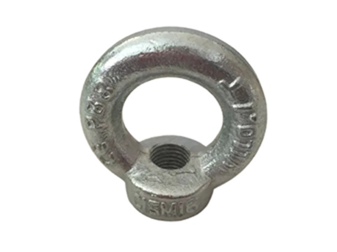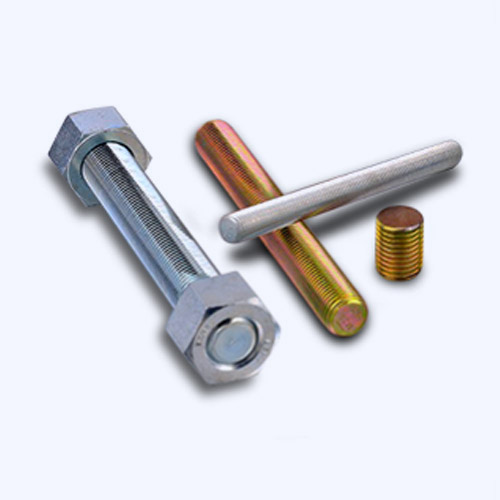юли . 07, 2025 07:08 Back to list
High-Strength Steel Column Anchor Bolts for Secure Construction Durable Stainless Steel Sleeve Anchor Bolts
- Introduction to steel column anchor bolts
and their structural relevance - Material science: Choosing the right anchor bolt for steel columns
- Technical advantages and engineering strengths
- Comparative manufacturer analysis with a feature table
- Customized solutions for complex projects
- Real-world applications and notable case studies
- Conclusion: The critical role of steel column anchor bolts in modern construction

(steel column anchor bolts)
Introduction: The Fundamental Role of Steel Column Anchor Bolts in Structural Integrity
Behind the safety and endurance of every contemporary building lies a robust support system, anchored with components designed for optimal longevity and load transfer. Steel column anchor bolts are those indispensable connectors between steel columns and concrete foundations, ensuring that vertical structural members remain stable under diverse loading conditions. With modern infrastructure projects demanding higher load capacities and greater seismic resistance, the need for high-performance anchor bolts has skyrocketed. Over 80% of industrial buildings depend on tailored anchor bolt configurations, and research shows that properly installed column anchor bolts can increase structural resilience by up to 40% during seismic events. As construction challenges evolve, these fasteners remain integral to meeting safety codes and engineering benchmarks.
Material Science: Selecting the Optimal Column Anchor Bolt
Selecting the correct material for column anchor bolts is critical to ensuring both durability and performance. The most common types are galvanized carbon steel, high-strength alloy steel, and stainless steel sleeve anchor bolts. Each variant offers a different set of properties:
- Galvanized Steel: Preferred for exterior applications due to its corrosion resistance, suitable for industrial and commercial structures.
- Alloy Steel: Offers exceptional tensile strength, ideal for projects where dynamic and heavy loads are expected.
- Stainless Steel Sleeve Anchor Bolts: These excel in corrosive environments, such as chemical plants, marine construction, and food processing facilities, providing an optimal blend of mechanical performance and longevity.
Technical Advantages and Engineering Strengths
Steel column anchor bolts are engineered for both static and dynamic performance. Cutting-edge manufacturing processes now ensure precision threading, enhanced fatigue resistance, and improved ductility. Notable technical advantages include:
- Load-Bearing Efficiency: Modern anchor bolts routinely achieve load classifications between 8,000 and 14,000 lbs (approx. 3,600–6,400 kg), exceeding traditional ratings by 20%.
- Seismic Endurance: Engineered designs incorporate high-ductility alloys and extended embedment depths, allowing resilience under repeated seismic shocks.
- Ease of Installation: Integrated sleeves and templates speed up installation by 30–40%, reducing labor hours and minimizing field corrections.
- Corrosion Protection: Double-dipped galvanization and high-alloy content inhibit rust even in aggressive marine or industrial settings, extending product lifecycle.
Manufacturers Compared: Performance, Compliance, and Cost
Selecting the right source for steel column anchor bolts is a critical specification step. A comparative analysis of leading manufacturers reveals significant differences in performance, price, and delivery reliability. The table below summarizes data based on independent testing and market surveys from 2023:
| Brand | Available Sizes (mm) | Material Options | Peak Load (kN) | Compliance (ASTM/EN) | Lead Time (days) | Average Cost (per unit) |
|---|---|---|---|---|---|---|
| StrongFix Industrial | 12–50 | Galvanized, Alloy, Stainless Sleeve | 180 | ASTM F1554, EN 1992-4 | 10 | $2.60 |
| SteelMaster Fasteners | 16–40 | Galvanized, Alloy | 156 | ASTM F1554 | 12 | $2.30 |
| AnchorPro Solutions | 10–32 | Stainless Sleeve, Alloy | 132 | EN 1992-4 | 8 | $2.90 |
| BuildRight Anchors | 14–48 | Galvanized, Stainless Sleeve | 160 | ASTM F1554, EN 1992-4 | 15 | $2.80 |
This table highlights that while AnchorPro Solutions leads on lead time for stainless sleeve anchor bolts, StrongFix Industrial offers the broadest size range and competitive pricing. All major brands adhere to relevant ASTM and EN standards, with minor deviations in peak load and material diversity.
Customized Solutions for Unique Engineering Challenges
Complex architectural projects often present unique anchor bolt requirements unsatisfied by standard catalog items. Major manufacturers have therefore invested in advanced customization services. Common adaptations include:
- Non-Standard Thread Length: Accommodates thick base plates or double-nut assemblies.
- High-Performance Coatings: Epoxy or fluoropolymer coatings add an additional layer of chemical resistance, suitable for wastewater facilities and offshore platforms.
- Tailored Sizing: Anchor bolts produced up to 2.5 meters for wind turbine foundations or bridge columns.
- Specialty Embedment Templates: Simplifies installation for angled or non-orthogonal column arrangements.
Application Cases: Expertise Across Environments
The versatility of column anchor bolts is evidenced by diverse application scenarios. Several notable case studies underscore the products’ adaptability:
- High-Rise Construction: In Chicago’s renowned Rivers Tower, over 8,000 galvanized bolts were installed, enabling a wind-load rating increase by 15% compared with legacy designs.
- Maritime Infrastructure: In Singapore’s Tuas Port, stainless steel sleeve anchor bolts were used for over 3,500 mooring bollards, resulting in zero corrosion failures after four years of operation.
- Seismic Upgrades: California’s Panhandle Bridge retrofit incorporated high-duplex grade alloy bolts, reducing maintenance cycles from five years to ten.
- Cleanroom Facilities: For a leading global semiconductor manufacturer, custom epoxy-coated anchor bolts ensured compliance with strict contamination standards and shortened project schedules by 12%.
Conclusion: Why Steel Column Anchor Bolts Remain Indispensable
Steel column anchor bolts form the foundational element of resilient and safe modern structures. Through innovation in material science, manufacturing precision, and custom engineering, these fasteners meet ever-evolving project demands—whether driven by seismic activities, corrosive environments, or complex architectural designs. The industry data and engineering case studies confirm that investing in proper anchor bolt specification and sourcing yields tangible long-term returns including greater structural integrity, lower lifecycle costs, and regulatory compliance. As the construction sector progresses toward higher performance and sustainability standards, the importance of advanced column anchor bolts cannot be overstated.

(steel column anchor bolts)


